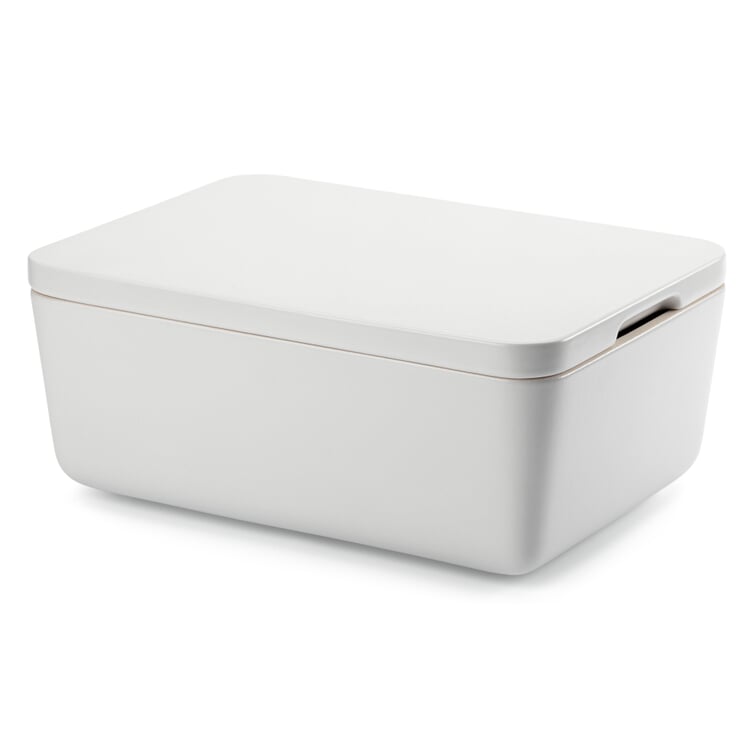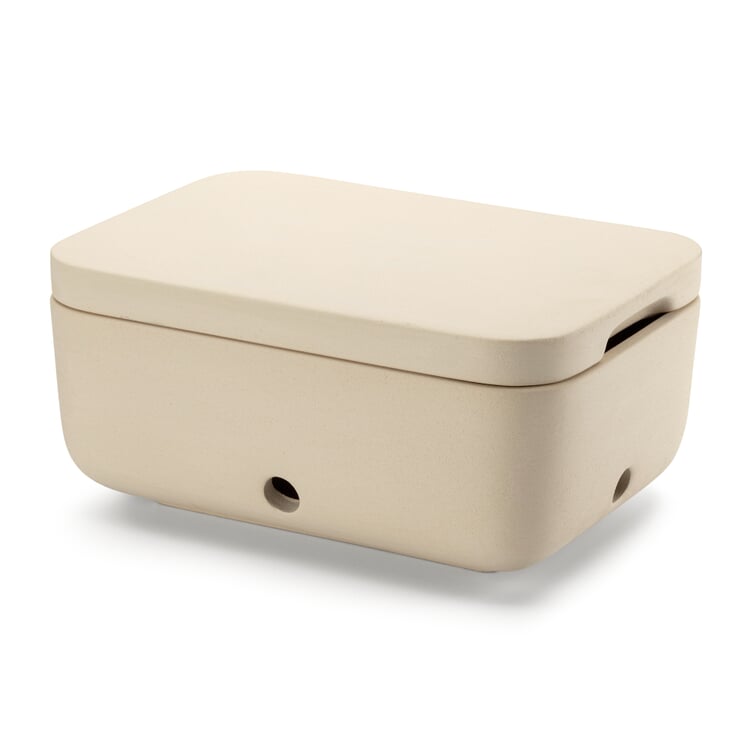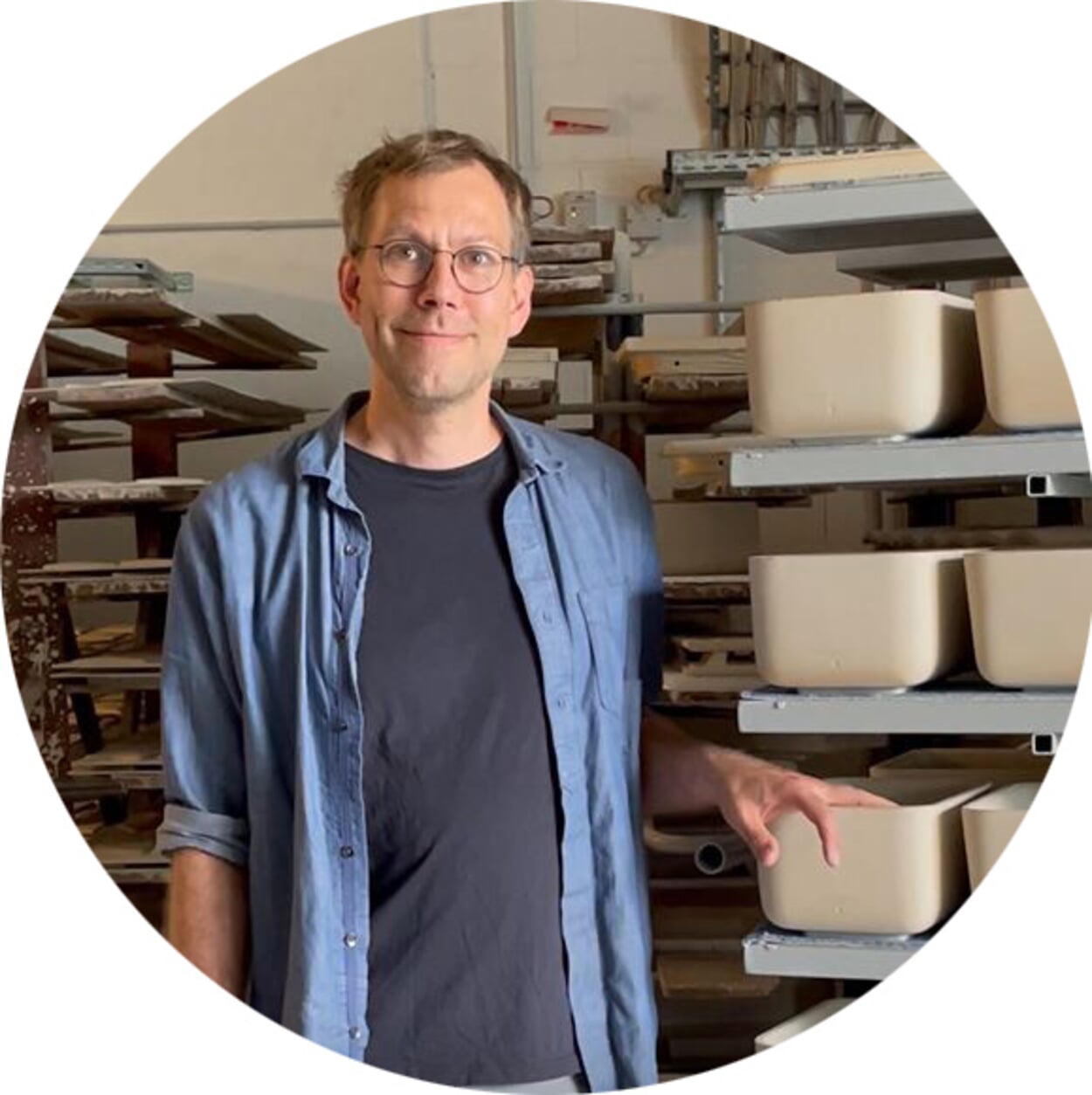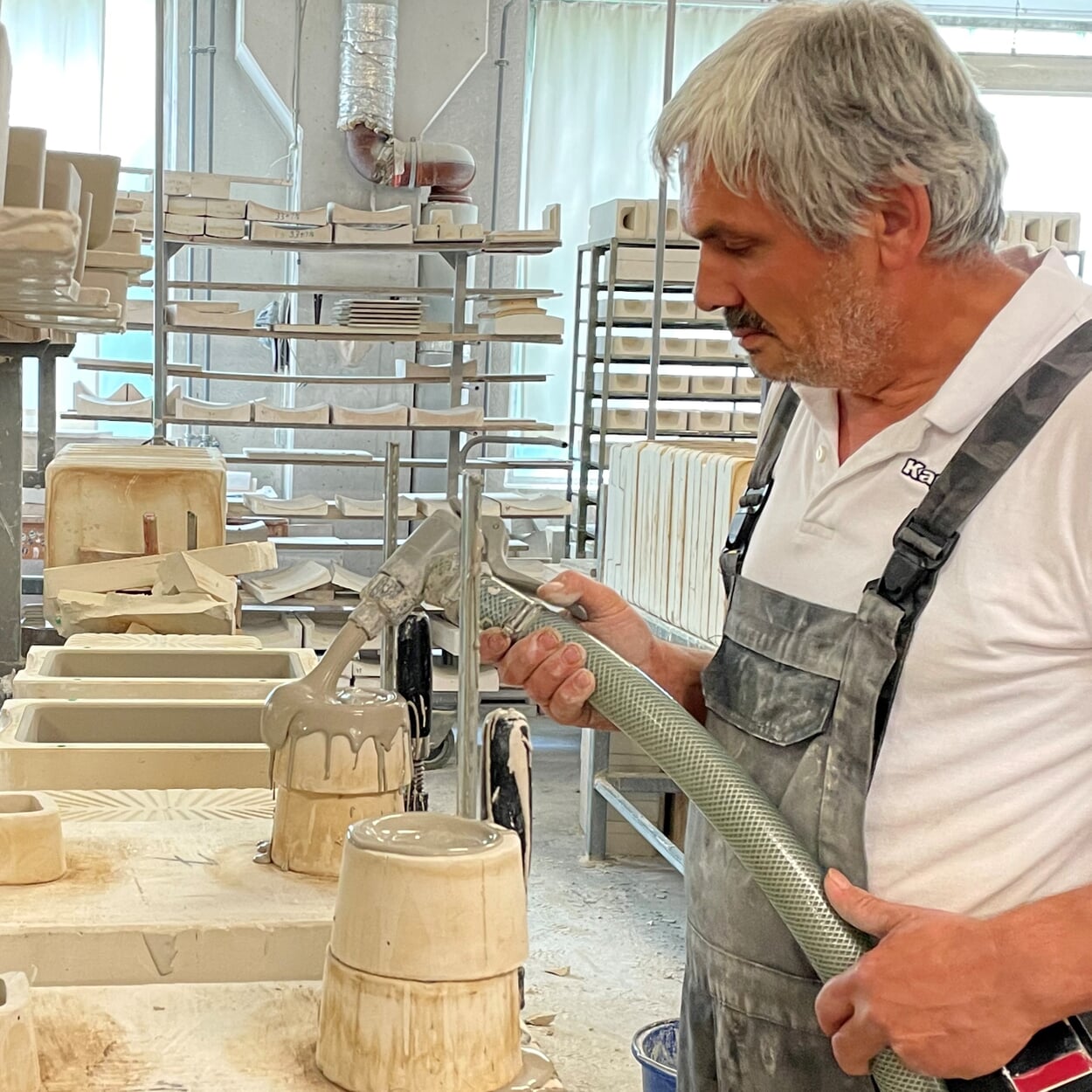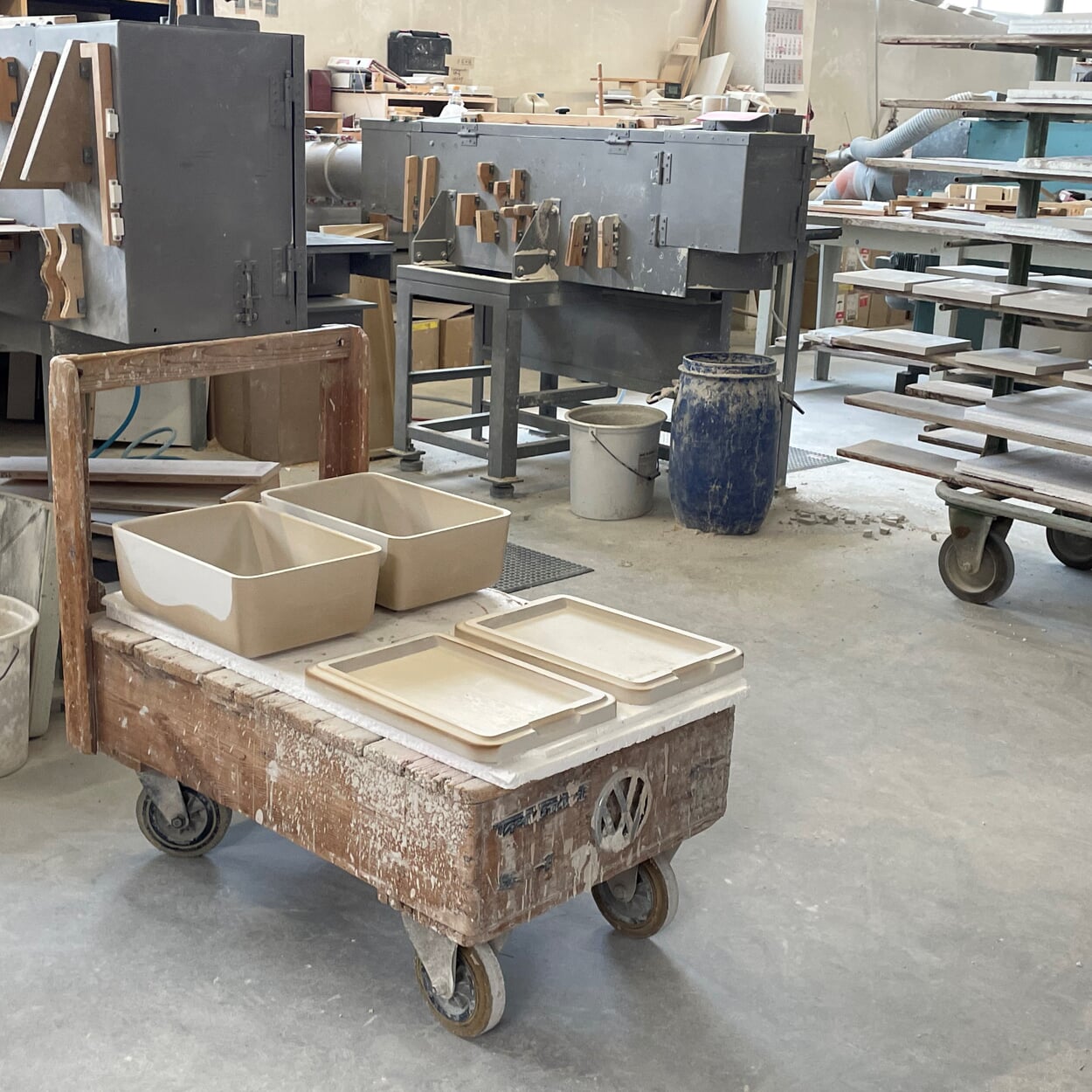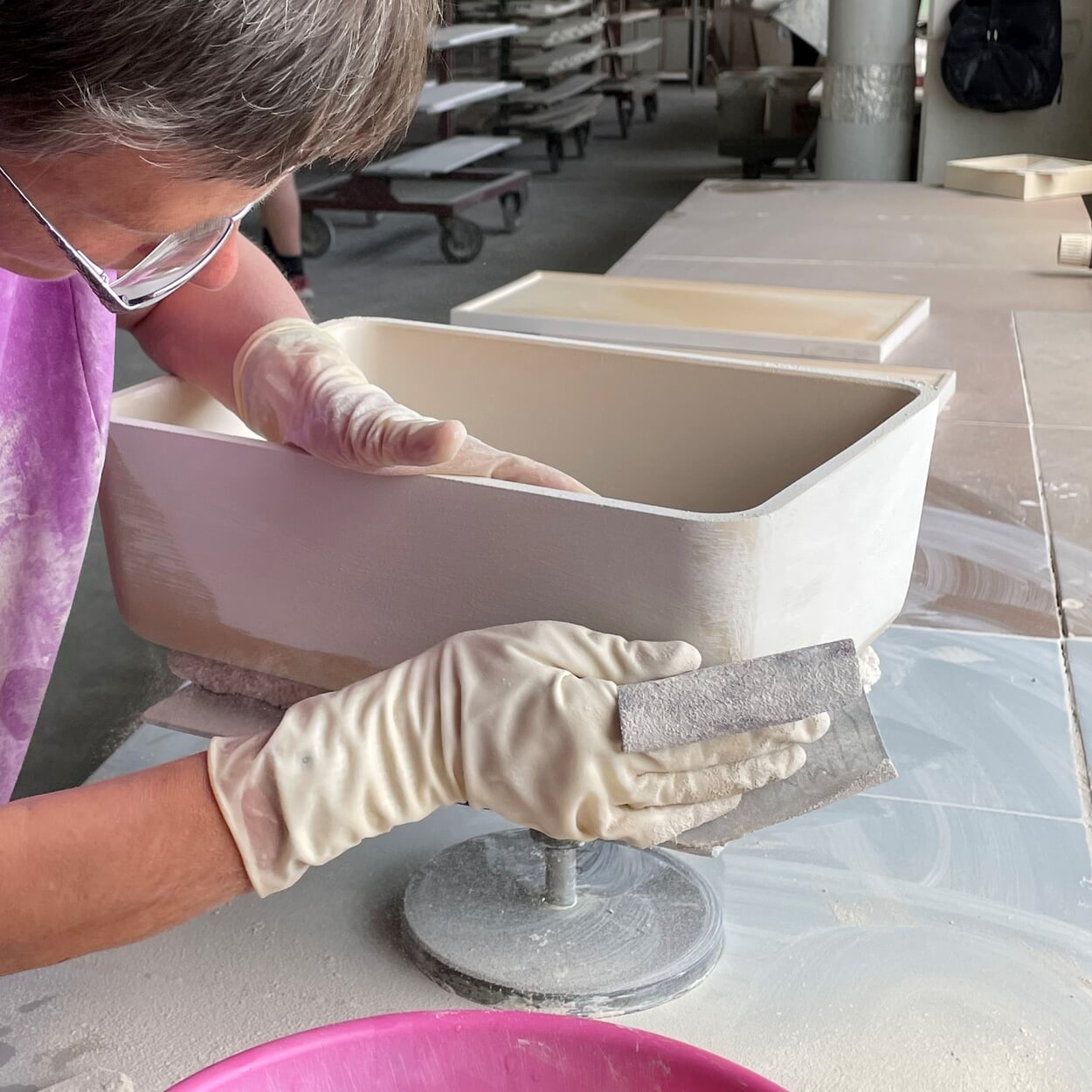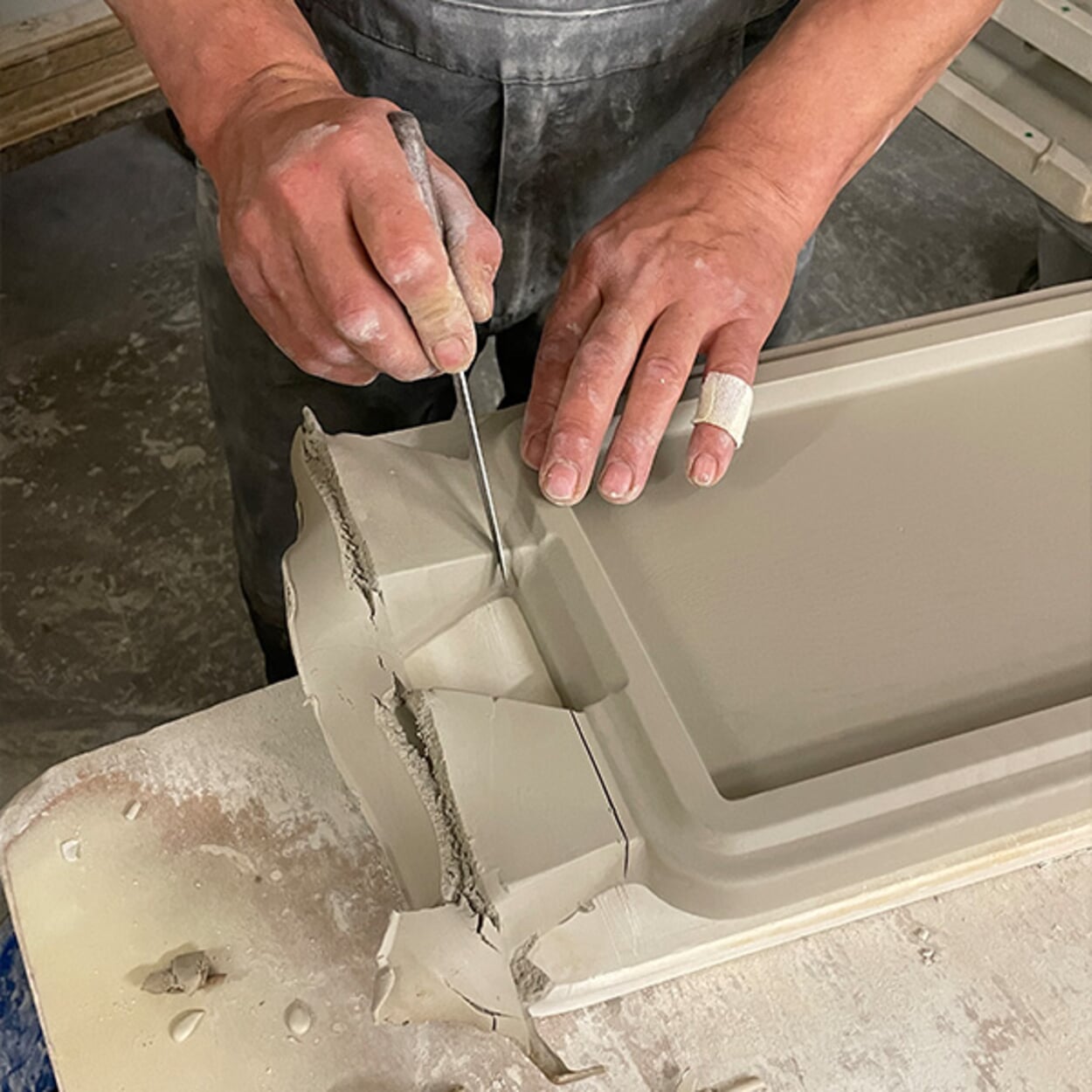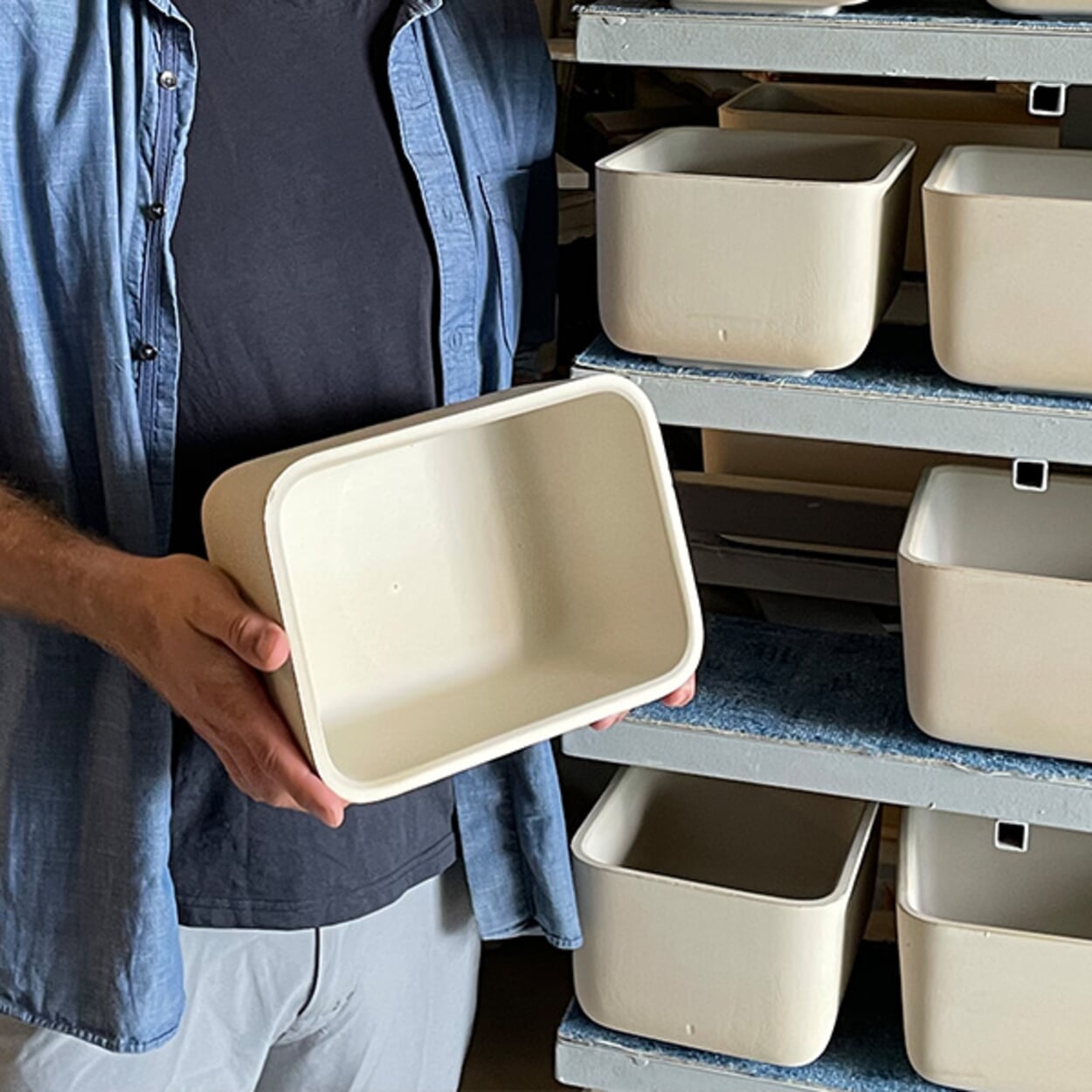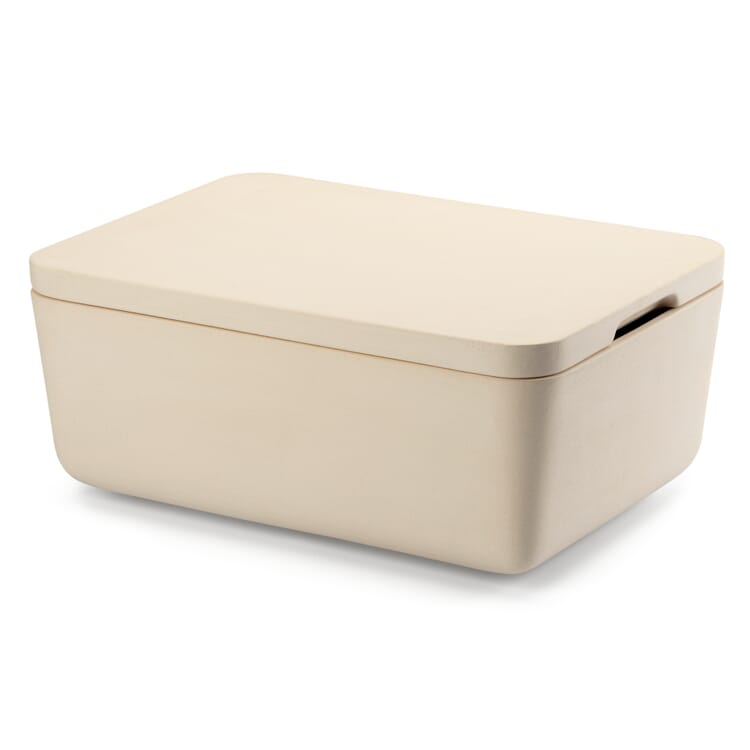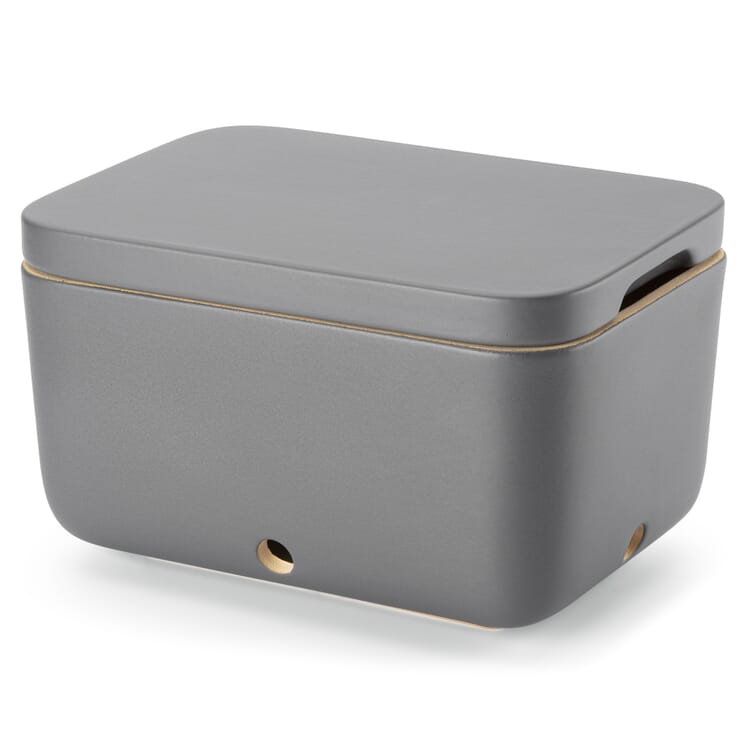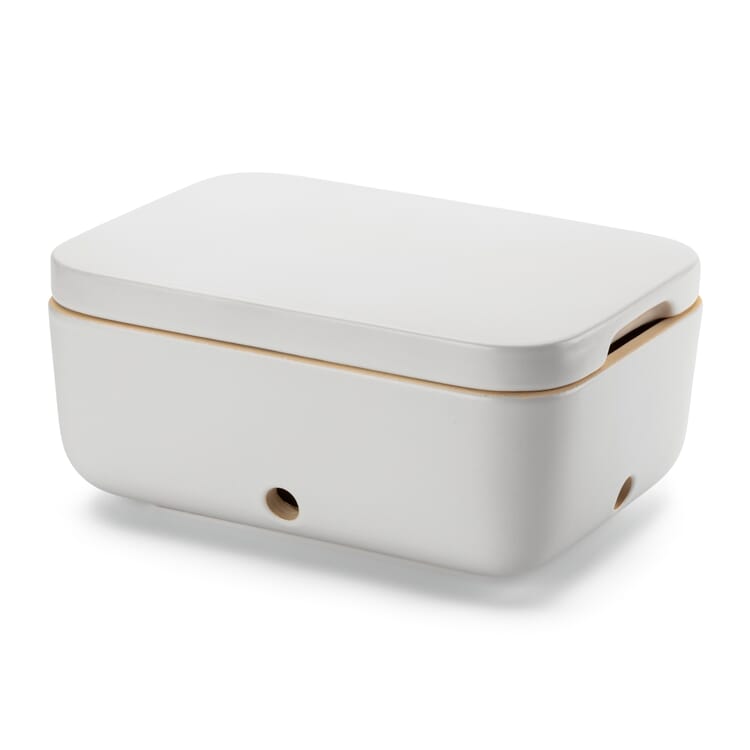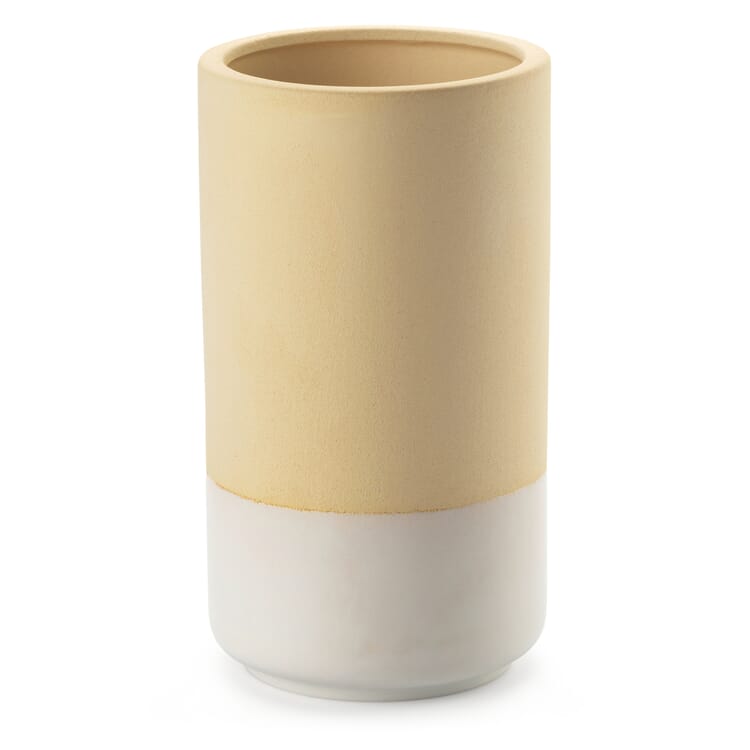Topic
The finest craftsmanship: ceramics from Rehau
It is handmade in the truest sense of the word. The REHAU storage containers for bread, potatoes and onions - and the wine and champagne cooler in the series - are made by MAGAZIN in the Upper Franconian community that gives them their name. It takes countless practiced hand movements to create the vessels designed by Kai Linke from the archaic material clay.
Rehau bread bins
NEW: WINE AND CHAMPAGNE COOLER REHAU
Without a socket, cooling sleeves or ice cubes: a self-cooling container for wine and sparkling wine based on the principle of evaporative cooling.
Potato and onion storage from Rehau
Reportage
Old knowledge for the new age
Designer Kai Linke created the REHAU ceramic vessels. We accompanied the Frankfurt designer on a visit to the production facility in Rehau.
Kai Linke and Matthias Kaufmann, the Frankfurt-based designer and Managing Director of Kaufmann Keramik, greet the employees on a tour of the production facility with obvious amusement, check the blanks cast in the morning and inspect the goods stacked up for firing. "Kaufmann Keramik is my favorite company to work with," says Linke. "The quality of the products is good, I know where they are produced and I know the people who make them." Matthias Kaufmann adds: "As a family business, we are very honest. We have the entire value chain in-house, nothing is outsourced." It's a well-established process: the ceramic objects move from hand to hand, from workstation to workstation through the production hall at Kaufmann Keramik. But the simple shape of the bread, potato and onion boxes does not reveal how much manual work really goes into them. It starts with the pouring, the liquid clay has to be poured into the molds individually for each piece. After around two hours, they are carefully removed from the mold - by hand, of course. After they have slowly dried for several days, the edges are cleaned and the surfaces sanded by hand at the next station. The next step is glazing: An employee sprays the glaze onto the lids and jars in an elegant sweep of the wrist. Finally, firing at 1,050 degrees in the large kiln: the ware is stacked by hand on a trolley, and after firing it is taken down again by hand, stored and later packed on pallets for shipping. And all this in the middle of Europe! In the Upper Franconian municipality of Rehau, with a population of just under 10,000, in the traditional German porcelain and ceramics region not far from the Czech border.
Linke has been working with the manufactory for over ten years, while Kaufmann specializes in tiled stove ceramics and also sells its own collection of wall tiles. A total of around 70 men and women are employed at Rehau; in addition to Linke, the designer Sebastian Herkner and the interior design studio Aberja also create stove tiles and tiles for the family business. Kai Linke and Matthias Kaufmann can't remember exactly when the idea of developing boxes for bread, potatoes and onions came about. However, it is not new: people have known about the special properties of ceramics, which are predestined for storing food, for thousands of years. The open-pored fired clay of the REHAU containers absorbs 10 to 15 percent moisture and releases it again. As a result, the bread in the containers does not stale so quickly and vegetables stay fresh for longer.
"You can really feel the craftsmanship in the things."
At the beginning of the design process, Kai Linke first researched how food can be stored. "You might think that plastic or glass would be best for storing food, but that's often not the case," says the designer. "Cheese or cold cuts such as sausage and ham also keep longer in ceramic containers." Kai Linke made the boxes even better with small design details: the version for potatoes and onions has small holes on the sides to allow air to circulate. And the base of the bread bin is sealed, making it easier to clean. Linke's approach: Designing a good, functional and durable item. "Not a trendy product. You should have fun with it for a long time." He had no specifications; the design of the vessels was partly a result of the production conditions: A tapered object is easier to "unmold", i.e. remove from the mould, after casting. As a designer, Kai Linke sees it as his responsibility to develop new applications and products for traditional materials and craft techniques. This is the only way to preserve old knowledge for the future. "My designer heart simply beats faster when I see how people work here," he enthuses. "How often a product is picked up. You can really feel the craftsmanship in the things."
Interview with KAI LINKE
Contemporary design and traditional craftsmanship - how do they go together?
I believe that craftsmanship has always influenced contemporary design - and vice versa.
How did you come up with the idea of designing storage vessels for ceramics?
People have always stored food in ceramic vessels. Unfortunately, this has been somewhat forgotten in this day and age. I have transformed this old form of storage into new, creative boxes.
Why are bread, potatoes or onions stored well in your containers?
Ceramic is an excellent material for storing food, as it absorbs moisture and releases it back into the food. The food is kept dark and cool at the same time, which means it lasts much longer and retains its aroma.
How important is the sustainability of your products to you as a designer?
Sustainability plays a key role in product design for me, especially with the bread, potato and onion boxes. Hardly any waste material is produced during the manufacturing process; the raw materials are natural and food-safe. They have served us humans since time immemorial, we can simply dispose of them or reuse them.
Why is the method of storage in ceramic containers also more sustainable?
The ceramic containers replace the refrigeration, so to speak, and influence the transformation of the air humidity, which means that the food lasts longer.



